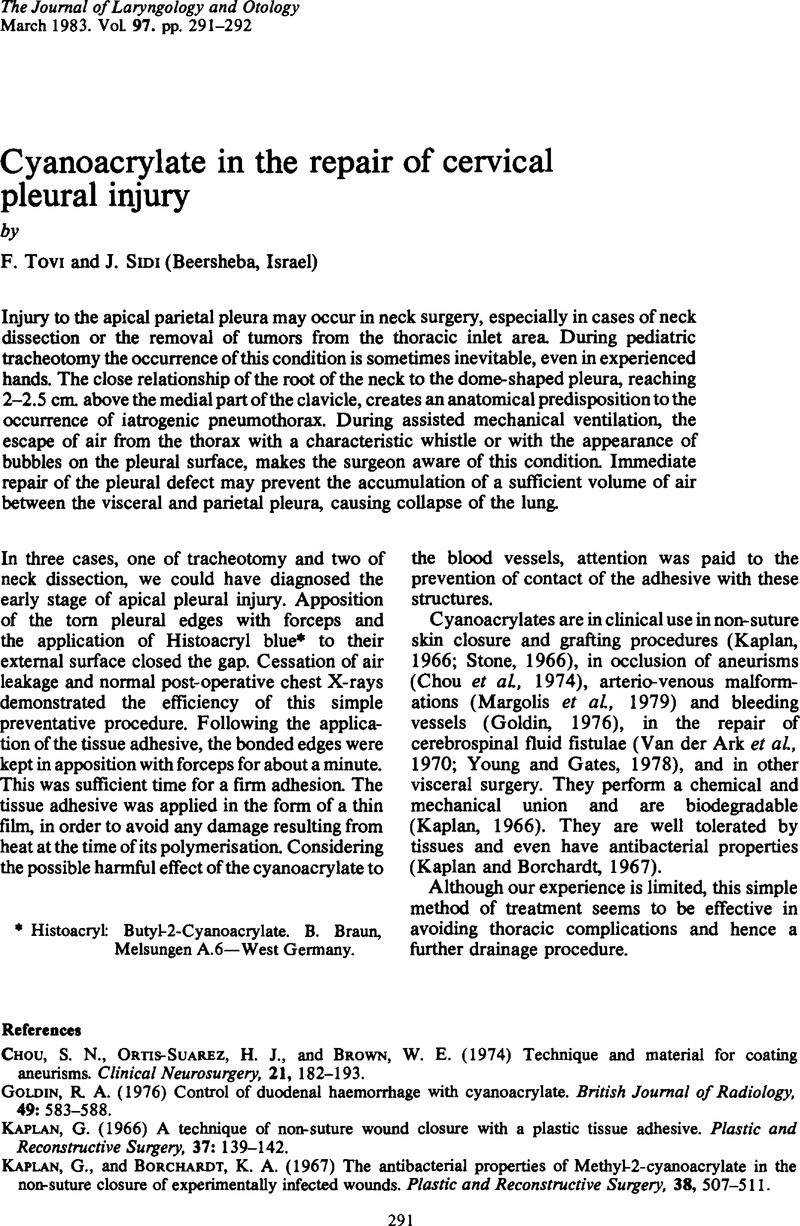No CrossRef data available.
Article contents
Cyanoacrylate in the repair of cervical pleural injury
Published online by Cambridge University Press: 29 June 2007
Abstract
An abstract is not available for this content so a preview has been provided. Please use the Get access link above for information on how to access this content.

- Type
- Clinical records
- Information
- Copyright
- Copyright © JLO (1984) Limited 1983
References
Chou, S. N., Ortis-Suarez, H. J., and Brown, W. E. (1974) Technique and material for coating aneurisms. Clinical Neurosurgery, 21, 182–193.CrossRefGoogle Scholar
Goldin, R. A. (1976) Control of duodenal haemorrhage with cyanoacrylate. British Journal of Radiology, 49: 583–588.CrossRefGoogle ScholarPubMed
Kaplan, G. (1966) A technique of non-suture wound closure with a plastic tissue adhesive. Plastic and Reconstructive Surgery, 37: 139–142.CrossRefGoogle Scholar
Kaplan, G., and Borchardt, K. A. (1967) The antibacterial properties of Methyl-2-cyanoacrylate in the non-suture closure of experimentally infected wounds. Plastic and Reconstructive Surgery, 38, 507–511.CrossRefGoogle Scholar
Margolis, M. T., Freeny, P. C., and Kenrick, M. M. (1979) Occlusion of a spinal cord arterio-venous malformation. Journal of Neurosurgery, 51, 107–110.CrossRefGoogle Scholar
Stone, H. H. (1966) Utilization of Methyl-2-cyanoacrylate in fixation of skin grafts. American Journal of Surgery, 112, 439–440.CrossRefGoogle ScholarPubMed
Van der Ark, G. D., Pikethly, D. T., and Ducker, T. B. (1970) Repair of cerebrospinal fluid fistula using a tissue adhesive. Journal of Neurosurgery, 33, 151–155.CrossRefGoogle Scholar
Young, W. C., and Gates, G. A. (1978) Cyanoacrylate in transphenoidal hypophysectomy. The Laryngoscope, 88, 1784–1788.CrossRefGoogle Scholar


